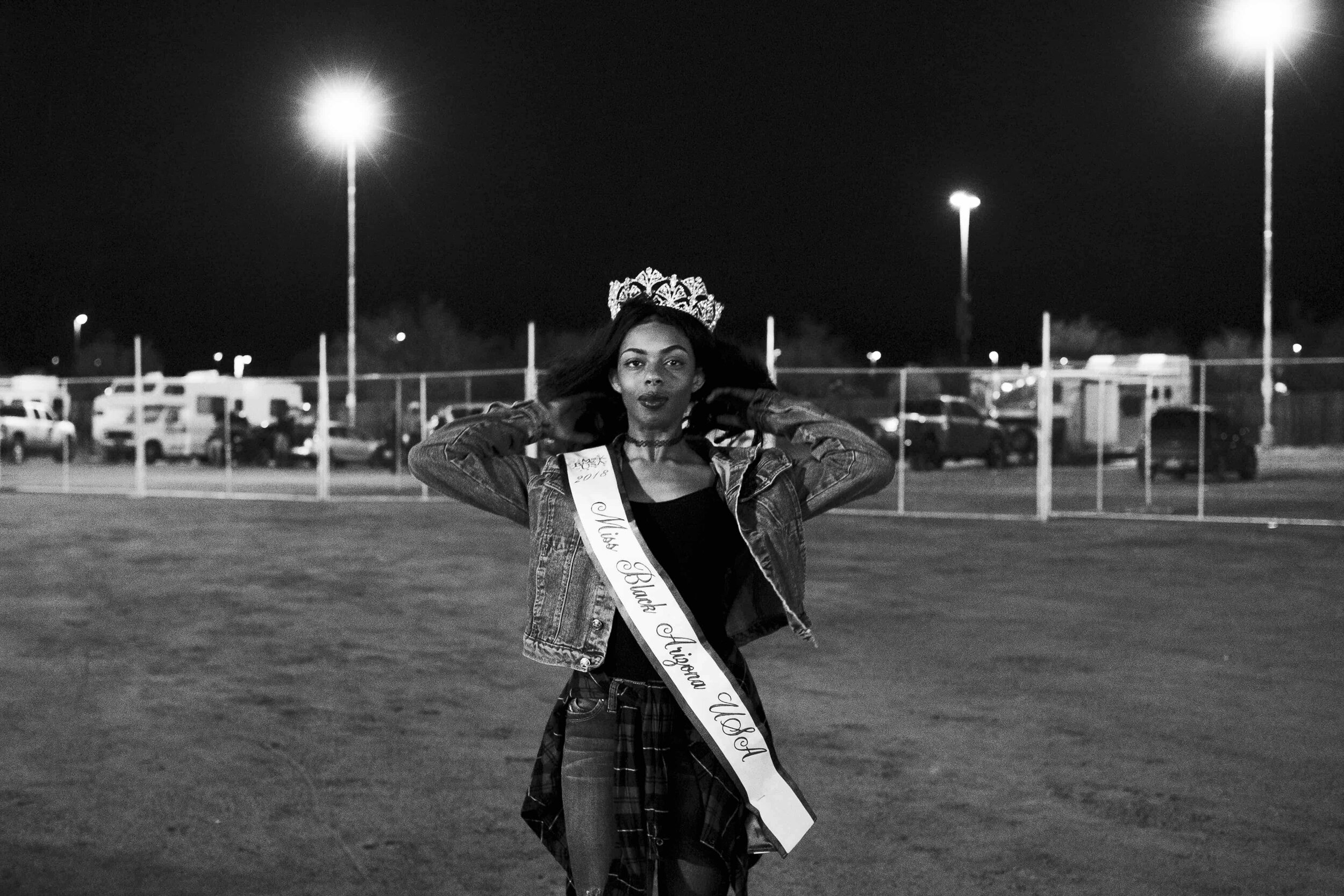Spotlight on Ivan McClellan
/BY CARA SCHAEFER
Photo from the Eight Seconds Project by Ivan McClellan
Cowboys are a staple of American history, but who might you find at a rodeo today?
We spoke with photographer Ivan McClellan about all things cowboy culture and his photography project Eight Seconds, which aims to capture the essence of the modern cowboy.
OUT THERE: What inspired you to start the Eight Seconds Project?
IVAN MCCLELLAN: I was at a party and the only other Black guy that was there said, “Hey I’m doing a documentary about Black rodeos. Do you want to tag along and take some photos?” There were these Black cowboys everywhere. They were cowboys, but presenting an image of a cowboy like I’d never seen. There were guys in basketball shorts and Jordans. Everything was bedazzled and fancy. There were pinky rings, braids, and long acrylic nails. There was hip hop and soul music. And it stunned me.
I’d always been into Westerns and cowboy culture, but seeing Black applied to it in such a creative and rich way really inspired me. I’m from Kansas City, so there were tons of folks from my hometown. It made me recontextualize my hometown and my upbringing to be not one of poverty or of urbanity. It changed it to be about this pride and ownership, this dignity and this robust culture. I got obsessed with it. I went to ten rodeos that year and continued to go for subsequent years. I eventually needed something to do with the photos. And so I came up with Eight Seconds, which is how long you have to ride a bull to get a qualified score in a rodeo.
OT: From these experiences, who is the modern cowboy to you?
IM: I’ve run into Western brands and they’re like, “Nobody gets to wear a cowboy hat unless they’re a real cowboy.” Like it’s an image that’s exclusive to somebody that ranches and farms and lives that lifestyle. And I don’t agree with that at all. I feel like it’s a culture, like punk or hip hop is a culture. It’s an invitation, and it’s open to anybody that feels that way. A lot of cowboys today don’t wear Western wear. I see a lot of Black folks that are fully in the culture, and they wear street wear while they ride their horses. They wear ball caps and jeans and t-shirts. I think the thing that’s really transformed for me is that it’s current. It’s about what’s going on right now.
Photo from the Eight Seconds Project by Ivan McClellan
OT: How do you think a connection to the land plays into the cowboy narrative?
IM: For Black cowboys, I think it’s critically important, and it’s something that has been really inspiring for me. The first Black cowboys came straight off of plantations, and they either got jobs on ranches or they came out of slavery and claimed their own plots of land for the first time in their family’s lineage. They formed all-Black towns like Boley, Oklahoma that were rich and thriving. And it was all centered around land ownership.
Fast forward to today, and there are fewer Black folks that own land and that farm or work with animals, so the ones that still do are important. It’s a legacy that everybody should know about and be proud of, because it not only harkens back to the past and tells us where we came from, but I think it gives us a road map to the future. Land ownership is critically important for people to come out of poverty, and I think the ability to grow your own food and work with animals is becoming more relevant as we see resource scarcity.
OT: Why did you use photography specifically as a medium to explore this subject?
IM: I enjoy photography because it’s not explicit. I find that when I put a photo out in the world, people gravitate to wholly different things in the photo. It’s like a song. Somebody can listen to a song and get something completely different than the person that sits next to them. I let the photo represent what it is. How you feel about it and what you do next, that’s all up to you.
OT: Is there any one image you took that best informs your own understanding of the modern cowboy?
IM: One of my absolute favorite photos is of an event called Pony Express. It’s a relay race. A bunch of riders ride around the arena, and they pass a baton as they go forty miles an hour on a quarter horse around a tiny arena. They wear hats as a formality, because when you’re going that fast it just pops right off your head. It’s right before the race starts, and there are these three young men right in a row, and they’re on their horses, and they just look so cool. They look so comfortable. One of them has a towel around his neck because it’s 105 degrees and he doesn’t want to get too sweaty. One of them is looking away from the camera, very intentionally, kind of chin up and posing. And the other guy is looking right at me with the coolest smile, like he’s one with this horse. They’re truly connected to their animal, and they’re confident that they’re going to perform well. And it feels like the kind of comfort and confidence that I want to have about what I’m doing.
This interview has been edited for brevity and clarity.



